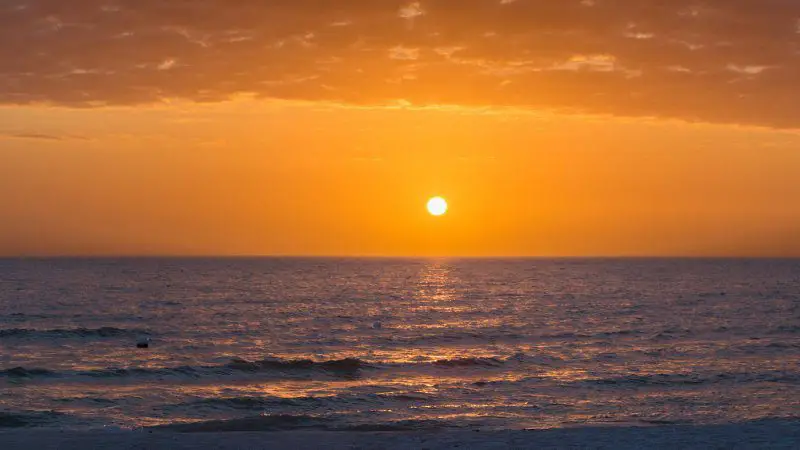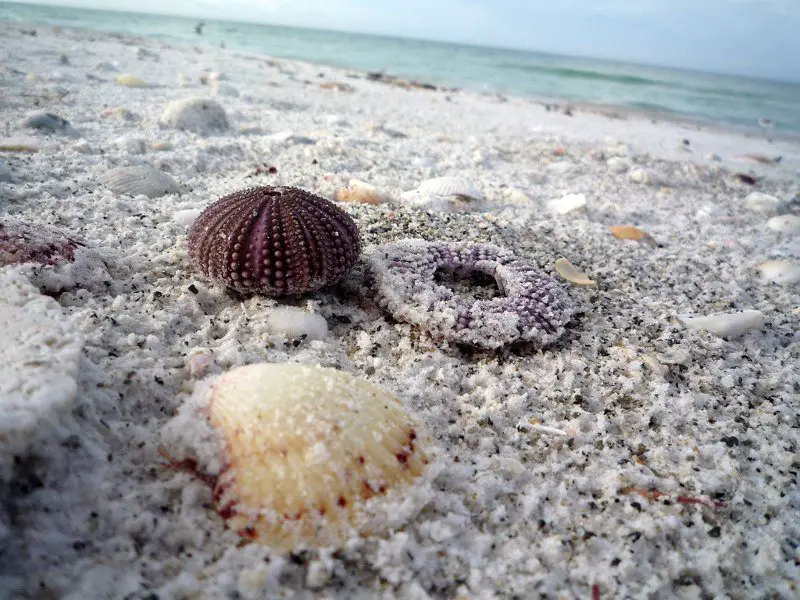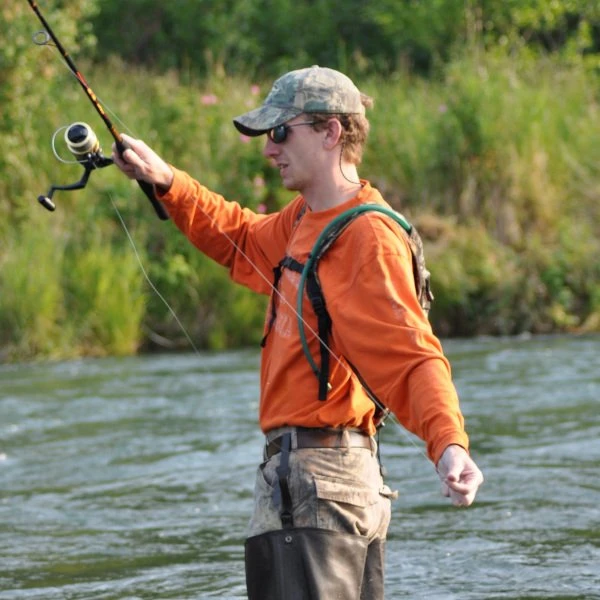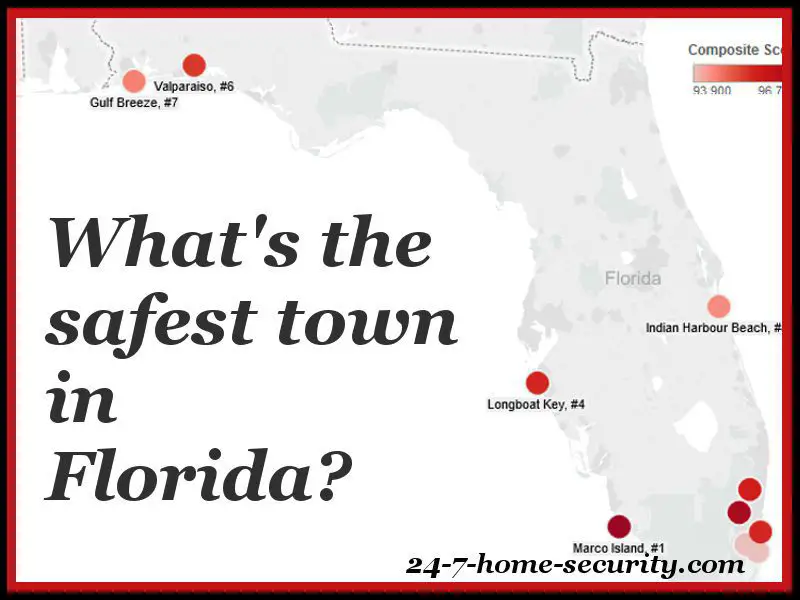Like to avoid being a victim of crime? Naturally, right?
Interested to see if you’re living in a sketchy town?
Check out our list of the safest places in Florida and explore the data for 200 towns embedded in the map down below.
How we ranked the cities
To come up with the safest towns in Florida, we:
- started with reported crime data collected and published by the FBI for 2013 (the latest year available)
- filtered out tiny towns (
- looked at crime rates per 1,000 residents
- weighted violent crimes more than property crimes to establish a final, composite score
- ranked the towns based on that score
Of course, other factors go into the best places to live, but a low crime rate seems like a great place to start!
We were even surprised in a few places. Often, smaller towns are safer, as shown by our burglary risk calculator. But, many around Miami also made the list.
That brings up another point, there is a delay in the data for it to get compiled, normalized, and released by the FBI. So, the 2013 data that we had available does lag reality by a bit. And unfortunately, not all localities report this data, so some nice places may have been left out.
#1 Marco Island, Fl

Population: 17,460
Marco Island can be found off the coast of Southwest Florida. It provides the largest barrier island of the ten thousand Florida Islands extending out to Cape Sable. There are areas of the island that have high elevations when compared to the generally flat landscape found in South Florida. The climate is tropical year round and is known for distinct wet and dry seasons. Marco Island typically experiences most of its rainfall between June and October each year.
In 1896, an anthropologist by the name of Frank Hamilton Cushing found a number of Calusa artifacts on Marcos Island. It is believed the Calusa people inhabited Marco Island in the year 500 A.D., Providing the island with a long and interesting history. Spanish explorers named the island La Isla de San Marco when they came to the island around the mid-1500s. They chose this name after St. Mark, a well-known gospel writer. William Thomas Collier’s arrival in the late 1800s marks the period of development on the island, and his son opened the oldest hotel on the island in 1896 (Olde Marco Inn). In the early 1900s, Clam digging was a major industrial factor on the island, and ferry services between Marco Island and the Isles of Capri started soon after. In the 1960s, a large amount of development took place a turned the Island into the tourist destination we know today. It wasn’t until August 28, 1997 that Marco Island was reincorporated as a city.
In 2010, the island consisted of 7,517 households with a median income of $73, 373 per year. Collier County school district operates three elementary schools, two middle schools, and one high school on the island. The Island Montessori Academy is also available for those who prefer to send their children to a private institution.
Marco Island, Florida is by far one of the safest cities in Florida. Marco Island crime rates have found to be 82% lower than the overall Florida mean when it comes to crime rates, and 76% lower than the national mean. When talking about violent offenses specifically, Marco Islands rating is 95% lower than Florida’s average and 92% lower to the United States. Marco Island is also 80% lower than Florida’s average and 74% lower than the national average when considering the rates crimes involving property occurs.
#2 Weston, Fl
Population: 69,100
Weston, FL is excellent for those looking for a suburban lifestyle. The city was established in 1996 and is found near Broward County’s western developmental boundary. The entire west side of the city is next to the everglades. Weston was ranked number 19 in the 2010 “Biggest Earners” category found in Money magazine. The median family income of the town is $119,689 per year.
Weston was also ranked as the Florida city with the most job growth, and 18th on the national ranking, in 2010. It was ranked as one of the “best affordable suburbs” that could be found in the county by BusinessWeek in 2006, and Family Circle Magazine listed Weston, FL as one of the best ten towns for families in 2015.
The city of Sunrise is found on its northeast, Davie to its east, Southwest Ranches to the South, and the Everglades to the north. In 2010, Weston contained 16,576 households, and contains multiple public schools from which to choose. The town also has two private schools and one charter school. The American InterContinental University of South Florida and Broward College are both located in the town. The town also contains five different parks and a thriving economy.
When looking at the crime rates for Weston, FL it is found that the annual crime rate is 84% lower than Florida’s average and 79% lower than the national average. When comparing violent crimes, Weston’s falls 88% lower than Florida’s average and 82% below the national average. When looking at property crime, Weston falls 84% below Florida’s average and 79% below the national average.
It's OK to brag about your town . . . just don't overdo it!
#3 Parkland, Fl

Population: 28,131
Parkland, FL is a very affluent city located in Broward County. Zoning laws in the city where designed to protect the character of the city, which is almost parklike. When the city first opened, there were no stores or traffic lights in the town. It wasn’t until the early 2000 that the city began building stores and installing traffic lights. The border between the counties of Broward and Palm Beach coincides with the northern border of Parkland. West Boca Raton can be found to the west. West Boca Raton is an area of Palm Beach counties that is an unincorporated area found to the west of Boca Raton’s city limits. To the east is Coconut Creek, Coral Springs can be found to the south, and the Everglades are to the west of the city.
In 2010, there were 8,292 households in the town. The median income for families within the city was $177,072 per year in 2008. Broward County Public School system serves the residents of Parkland. This school system consists of three elementary schools, one middle school, and one high school. Mary Help of Christians School is a private school for those who prefer not to send their children to public school.
When discussing violent crimes, Parkland falls 95% lower than the state average and 93% lower than the national average, helping it earn its spot at number 3.
Don’t Stop Here!
Be sure to tinker with the map below to see all of the data on property and violent crimes for all 200 cities that we ranked to make our list.

#4 Longboat Key, FL

Population: 7,143Longboat Key is a small town found in Manatee and Sarasota Counties. The town is found on the central west coast of Florida, on Longboat Key Island. The town was incorporated in 1955 and was originally inhabited by Native Americans. It wasn’t until the late 1800s that Longboat Key was opened for settlement. At the time of the town’s incorporation in 1955, only one third of the town was actually developed and only 215 people inhabited the island. The town’s name changed when it was incorporated from Longbeach to Longboat Key. The Arvida Corporation bought the south end of the town in the 1960s and began development.
The small town is located north of St. Armand’s Key and Lido Key and south of Bradenton Beach, Anna Maria, and Holmes beach. In 2010 there were 4,280 households in the town and the average median income for a household was $290,251 per year.
When considering whether or not the town is safe, it is important to look at the statistics. The crime rate for Longboat Key is 69% lower than the state average and 59% lower than the national average. When looking specifically at violent crime, the town falls 100% below both the state and national average. Longboat Key is 64% lower than the state average and 53% below the national average in regards to crime involving property.
#5 Bay Harbor Islands, FL
Population: 6,007
Bay Harbor Islands is located in Miami-Dade County. This section of Florida is actually separate from the mainland. It is separated by Biscayne Bay. Bay Harbor Islands is conveniently located about 20 minutes from Miami International Airport and in between the cities of Aventura and Miami Beach. Bay Harbor Islands was founded in 1947 and consists of two islands. Broadview and Bay Harbor are the two islands that make up the Bay Harbor Islands. Broadview is made up mostly of single family homes, while Bay Harbor is more of a business district and multi-family housing district. In 2010, the Bay Harbor Islands consisted of 3,199 households. The median income for a family was around $43,939 per year.
Bay Harbor Islands is by far one of the safest places to live in Florida. The overall crime rate for Bay Harbor Islands is statistically 74% lower than the state average and 66% lower than the national average. Bay Harbor Islands falls 84% lower than the state average and 77% lower than the national average in regards to violent crimes. In specific regards to property crime, Bay Harbor Islands falls 73% below the state average and 64% below the national average.
#6 Valparaiso, FL

Population: 5,188
Valparaiso, FL is located in Okaloosa County. The town is named after the city Valparaiso in Indiana. James E. Plew, a Chicago businessman that relocated to this area in 1922, became “one of Northwest Florida’s pioneer developers”, and decided on Valparaiso as “the most likely spot for development.” Plew was instrumental in numerous development activities that took place within this community. Plew strongly believed a military payroll would help boost the economy of that region, which at the time was going through a depression. Because of this belief, he leased the Valparaiso Airport from the City of Valparaiso as an airdrome. On June 14, 1935 this area became the home of the Valparaiso Bombing and Gunnery Base and was the founding of the Eglin Air Force Base.
Valparaiso is known for its high temperatures and the evenly distributed precipitation throughout each year. Summers typically have more rainfall than the winter time, due to convectional thunderstorm activity in the area. Valparaiso’s climate is classified as a Humid Subtropical Climate.
In 2010 there were 1,928 households in Valparaiso. The median income for a family was around $46,411 per year. The Heritage Museum of Northwest Florida located in Valparaiso provides an opportunity for residents to experience arts and culture in their everyday lives.
When considering how safe the area is for a family to reside in, Valparaiso’s overall crime rate is 73% lower than the state average and 64% lower than the national average. Specifically, Valparaiso falls 72% below the state average and 59% below the national average in relation to violent crimes committed. As for property crimes, Valparaiso is 73% lower than the state average and 65% lower than the national average.
#7Gulf Breeze, FL
Population: 6,195
Gulf Breeze, Florida is located on the Fairpoint Peninsula within Santa Rosa County. This town is known for being a suburb of Pensacola, found North of the town, and across the Pensacola Bay. The city is surrounded by water on three different sides, and the eastern part of the town is occupied by the Naval Live Oaks Reservation.
The United States Government purchased the land that encompasses the Naval Live Oaks Reservation in 1828. This land was purchased for experimentation purposes. The government wanted to conduct experiments with acorns in order to study the cultivation of live oaks in order to produce wooden ships. Live Oak wood was the primary choice for materials used in ship building before the Civil War occurred. Because of this, the protection and cultivation of the trees in this area for the United States Navy was seen as a vital action needed to take place for defense purposes.
The Live Oaks Reservation covers more than 1300 acres of land within the Gulf Islands National Seashore and the National Park Service supervises the area. Gulf Islands National Seashore is an excellent recreation opportunity for residence, and provides many natural and historic resources. The regions that are protected include both mainland areas and areas found on seven different islands.
In 2010, there were 2,377 households in Gulf Breeze. A family’s median income for one year was around $61,661. Gulf Breeze has two different elementary schools, a middle school, and a high school.
When considering how safe this area is for you and/or your family, the city is statistically one of the safest in Florida. On average, Gulf Breeze falls 42% below the state average and 23% below the national average in regards to crime. Gulf Breeze is 94% lower than the state average and 91% lower than the national average in regards to violent crimes committed. When talking about crimes involving property, Gulf Breeze is statistically 34% below the state average and 13% below the national average.
#8 Indian Harbour Beach, FL
Population: 8,334
Indian Harbour Beach is located in Brevard County. The town Indialantic is found around 3 miles south of Harbour Beach, and Satellite Beach can be found north of the town. Indian Harbour Beach is known to be the first United States community to become a NOAA Tsunami Ready Community along the East Coast. The climate for the region is typically tropical and temperate. In the summer, the average daytime temperature is around 90 degrees, and around 72 degrees during the winter.
Along the beaches of Indian Harbour Beach, it is not uncommon to see a nearly extinct Atlantic loggerhead sea turtles nest. Around one nest every ten feet can be found along the shoreline of the cities beaches each year. Off of Indian Harbour’s Shoreline, the endangered right whales typically calve. The West Indian manatees, another endangered species, can be seen in the city’s canals or along the Banana River. Bald Eagle sightings are also not uncommon to the area.
In 2010, there were 3,762 households in Indian Harbour Beach. The median family income was around $56,803 per year. Indian Harbour Beach also had the highest percentage of residents containing undergraduate degrees in 2010. Statistically, 41% of residents had an undergraduate degree in the city, while only 26% of the entire county had their undergraduate degree. Indian Harbour Beach has one elementary school and two private schools. Torah Academy Preschool and Chabad Hebrew School are the two private institutions.
Statistically, Indian Harbour Beach falls 60% below the state average and 46% below the national average in regards to crime rates. Violent crimes specifically in the area are 89% lower than the state average and 84% lower than the national average. Indian Harbour Beach has a property crime rate that falls 55% below the state average and 41% below the national average.
#9 Key Biscayne, FL
 Population: 12,924
Population: 12,924
Key Biscayne is a town located within Miami-Dade County. Miami Beach is north of the town and Miami is on its west. Key Biscayne is connected to Miami by the Rickenbacker Causeway, which was built in 1947. Crandon Park and Miami-Dade County Park can be found to the north of Key Biscayne, Bill Baggs Cape Florida State Park to the South, Biscayne Bay to the west, and the Atlantic Ocean along the eastern border.
It wasn’t until the Rickenbacker Causeway opened in 1947 that the island was opened up for large scale development, even though schemes to develop a town in the area had occurred earlier in history. During the first part of the 1900s, the largest coconut plantation within the continental United States was operated on the norther two-thirds of the island. The Matheson family donated over 800 acres of family land to the Dade County in exchange for a commitment that the county would build the causeway from Miami to the island. This land became known as Crandon Park. Cape Florida was privately owned until 1966, at which time it was sold to the state and became known as Bill Baggs Cape Florida State Park.
Interestingly, President Richard Nixon purchased the first of three water front homes in 1969, which became known as the Florida White House. In 1991, the city became incorporated as a new municipality. Recently the area has seen construction take place of several resort hotels, condos and shopping centers. The area is known for a tropical monsoon climate, and typically enjoys cooler highs than Miami throughout the year. Hurricanes occasionally threaten the island, but rarely make landfall.
Key Biscayne has an elementary and middle school on the island and tax rates are one of the lowest in Miami-Dade County. In 2010, Key Biscayne contained 7,072 households. The average median family income was around $107,610 annually. The area is served by the Miami-Dade County School system.
In regards to the safety of Key Biscayne, the town’s crime rates are statistically 59% lower than the state average and 45% below the national average. Violent crimes fall 97% below the state average and 96% below the national average. Property crimes fall 53% lower than the state average and 38% lower than the national average.
#10 West Miami, FL
Population: 6,326
The city of West Miami is located within Miami-Dade County. The town itself is only three-quarters of a square mail. The town is found between Tamiami Trail and Coral Way, and West Haven and West Gate were both among earlier suggested names for the town. Coral Gables and Miami surround the small town, allowing small town living with large city access. In 2010, there were 2,180 households in the town. The average family median income was around $39,000 per year.
When considering whether or not to move you and your family to the town, safety is always a huge factor. West Miami’s crime rates fall 41% below the state average and 21% below the national average. Violent offense rates fall 62% below the state average and 44% below the national average. Property crimes fall 38% below the state’s average and 8% below the national average. In 2003, the amount of violent crimes on FBI records for the area was averaged out to 3.6 occurrences for every 1,000 people.
Sharing . . . a favorite thing.
Be sure to check out our articles for other states too!

Hi, I’m Jody. I graduated with honors with a Masters of Science in Computer Engineering and have over 15 years of experience working as an engineer with electronics products. I’m a lifelong learner and tinkerer and enjoy automating things around the house so I can solve bigger problems than getting out of bed to check if the garage door is closed . . . like too little sleep!
